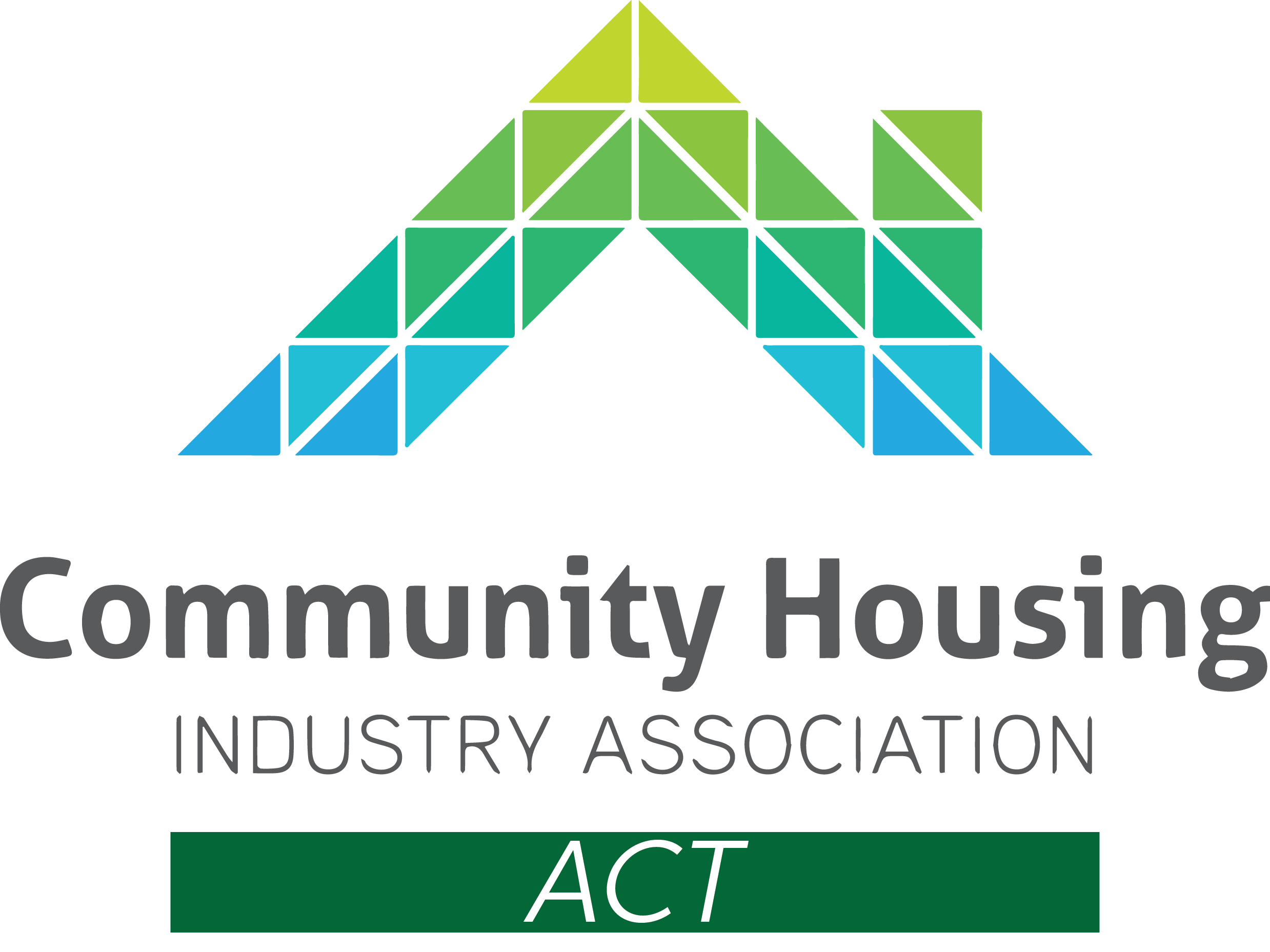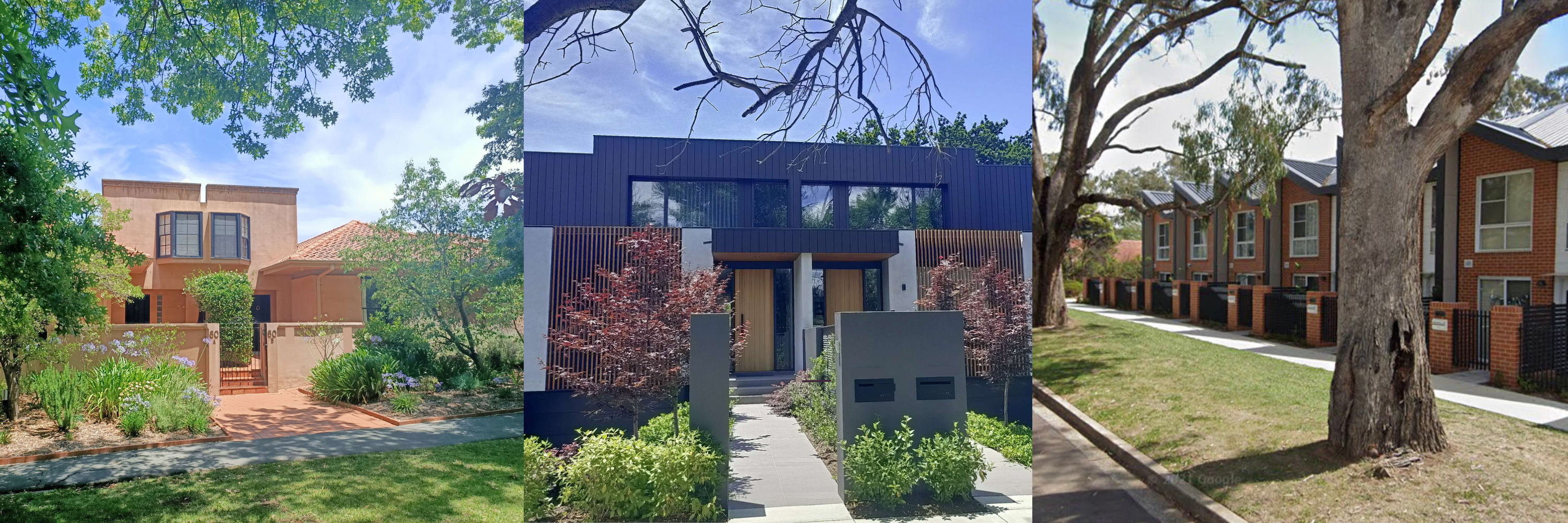Canberra needs Missing Middle housing
Canberra is in a housing crisis.
Over the past five years, Canberra rents have increased by 17%, faster than any other capital city besides Hobart, and Canberra is now tied with Sydney as Australia’s most expensive city for renters.1 Low rental vacancy rates and a persistent housing shortage have pushed up rents and housing costs, while reducing Canberrans’ discretionary incomes and the competitiveness of local businesses.
These costs are heaviest for our city’s most vulnerable, including younger Canberrans and families on low-incomes. 9% of Canberrans are in poverty, primarily due to the cost of housing.2 Throughout this crisis, our public housing system has simply not kept up. Over 3,000 people - roughly one out of every 150 Canberrans - are now on the public housing waiting list, in need of a home.
This housing shortage has intersected with an ongoing environmental and climate crisis. Experts from multiple fields, including those on the Intergovernmental Panel on Climate Change, have found that sustainable urban design is key to achieving our climate goals.3
For the ACT to meet its targets of net zero emissions by 2045 and 70% of new housing built in existing suburbs, we must create a more compact and connected city. Allowing people to live closer to jobs, services, and community will reduce our city’s environmental footprint, shorten commutes, and increase use of public and active transport.
These crises are not inevitable. Although a range of responses are needed from both the Territory and Commonwealth governments, we firmly believe that Canberra’s future as a sustainable and affordable city is in our hands.
We urge the ACT Government to reform our planning laws to embrace missing middle housing.
Missing middle housing refers to medium-density homes such as townhouses, duplexes, terrace houses, and small apartment buildings. These types of housing sit between the detached single family home – which makes up the vast majority of dwellings in the ACT – and large multi-story apartment buildings.
Missing middle housing is a proven way to provide more and better homes for Canberrans, while meeting our environmental and climate goals. For centuries, cities around the world have relied on medium-density housing to enliven urban areas, create stronger communities, and connect people with each other, and with great jobs, transport, and services. More recently, Auckland’s reforms to allow for more medium-density housing have stabilised housing costs in the face of continued growth in rents in peer cities across New Zealand and Australia.4
By contrast, the current Territory Plan strictly limits missing middle housing on 80% of Canberra’s residential land (the RZ1 zone), making it hard to build the kinds of terrace houses and townhouses so many Australian city-dwellers say they want to live in.5
These restrictive laws are also a major handbrake on social housing. As it stands, the planning system makes it easy to build sprawling mansions, but near impossible to build modest multi-family social housing of a similar size. Plans to expand Canberra’s meagre social housing stock are being hemmed in by burdensome regulations that limit the ability of public and community housing providers to build affordable medium density homes.
The Planning System Review and Reform Project is a crucial opportunity to write missing middle housing into law.
We call for the following practical policies to be adopted in the new Territory Plan:
- Legalise more private, public, and community-owned duplexes, terrace-houses, and townhouses by upzoning current RZ1 areas to the RZ2 standard, and allow this low-impact housing to be subject to similar streamlined development approval requirements as existing detached homes.
- Rejuvenate local centres and allow for more terrace-housing and low-rise apartment buildings, by upzoning current RZ2 areas to the RZ3 standard.
- Reform the CZ4 local centre zone to more easily allow for apartments above local shops, increasing the height limit to at least three storeys, while reserving ground floor space for commercial use.
- Enable more sustainable housing designs and reduced housing costs for the increasing number of Canberra families who don’t own a car, or only own one car, by reducing mandatory parking requirements to 1 car space per home, across all residential zones.
Embracing missing middle housing would be a major step toward a Canberra where no suburb is out of reach for those on modest incomes. It would put Canberra on a firm path towards net zero carbon emissions, by reducing our city’s environmental impact. And it would enliven our city and our local economy, by creating more connected local communities.
We look forward to seeing the ACT Government put missing middle homes at the heart of Canberra’s bright future.
Missing Middle Canberra is a coalition of organisations and citizens across Canberra who support sensible medium-density housing reform to make our city more affordable, liveable and sustainable.
References
-
Australian Bureau of Statistics, September 2022. Consumer Price Index. ↩
-
ACT Council of Social Service, October 2022, Factsheet: Poverty and Inequality in the ACT. ↩
-
IPCC, 2022. Climate Change 2022: Mitigation of Climate Change. Chapter 8. ↩
-
Greenaway-McGrevy and Phillips, 2022. The Impact of Upzoning on Housing Construction in Auckland. ↩
Our supporters
Panel discussion: Why Canberra needs the Missing Middle
On Wednesday 29 November, we're hosting a panel discussion, 'Why Canberra needs the Missing Middle', at Verity Lane Market in Civic. It's a chance to hear more about recent changes to Canberra's planning system, and why bold action is still needed to allow more affordable mid-density homes and create more liveable, sustainable suburbs.
Tickets are available for free on Eventbrite. Doors open at 6pm, with the discussion starting at 6:30pm. The event is also being streamed on YouTube.
On the night, we'll be joined by a fantastic panel of housing experts and advocates:
- Dr Simon Copland is the Executive Director of Pedal Power ACT, the ACT's peak body for cycling. Passionate about a more sustainable and accessible Canberra, Simon believes that a denser Canberra is one where more can cycle and scoot to where they need to go, and one better able to provide for quality active transport infrastructure.
- Jenny Edwards is the sole owner and director of Light House Architecture & Science, and has been recently recognised as the 2023 Energy Efficiency Champion at the National Energy Efficiency Conference in Sydney in May for her free advocacy and education work about residential energy efficiency over the last 15 years.
- Joel Dignam is the Executive Director of Better Renting, a national community organisation working for stable, affordable and healthy homes. A Churchill fellow, Joel has been on the frontline of Canberra's rental market, which are full of unaffordable, poorly insulated and mould infested suburban housing.
- Rob Henry is an award winning Canberra architect and a fellow of the Australian Institute of Architects. Rob has been involved in the ACT Demonstration Housing Project as the architect of the Griffith Manor House, and has unique insights into the challenges and opportunities for medium density housing in suburban areas.
Campaign updates
- - Media release: Canberra organisations unite behind push for more missing middle homes
- - Media release: Labor endorsement brings Missing Middle a step closer
- - Media release: Greens support provides green light for Missing Middle reform
- - Media release: Canberra housing experts pan new Territory Plan, call for more density
Frequently asked questions
What is missing middle housing?
Missing middle housing is medium-density housing: any type of housing that sits between low-density detached houses, and high-density apartment buildings. This includes granny flats (sometimes called “accessory dwelling units” or ADUs), dual-occupancies or duplexes, townhouses, terrace- or row-houses, low-rise apartment buildings (generally 3 stories or less), shop-top apartments, and other low-rise mixed-use housing projects. Missing middle housing can be private, public, or community-owned. We refer to medium-density housing as the “missing middle” due to the fact that medium-density housing is now relatively rare.
As at the 2021 Census, around 63% of Canberra dwellings were detached homes, while the remaining 37% were a mix of missing middle and high-density housing.
What policies are you proposing?
Canberra’s Territory Plan regulates the types of housing and other buildings that can be built in the ACT. The Plan does this by splitting up the city into various ‘zones’. Residential zones principally allow for housing, while commercial zones sometimes allow for both commercial and residential developments. Generally zones are numbered, with lower numbered zones only permitting lower density developments.
We propose four changes:
- Reforming Canberra’s lowest-density RZ1 zone to allow for duplexes and townhouses on larger blocks, as per the rules which apply to the RZ2 zone.
- Allowing for more low-rise apartment buildings and terrace-housing near to local shops by re-zoning RZ2 areas to the RZ3 standard.
- Allowing for more shop-top apartments in the CZ4 zone that generally applies to local centres, by allowing for three-story mixed-use buildings where the ground floor is dedicated for commercial use.
- Reforming Canberra’s mandatory minimum parking requirements, by allowing people to opt to build multi-bedroom homes with only 1 dedicated parking space if this best suits their needs.
What will your policies do for Canberra?
In Canberra, missing middle housing is currently strictly limited by planning rules. Notably, most types of missing middle housing are largely banned on 80% of Canberra’s residential land (the RZ1 zone). This has contributed to our current housing shortage, where very low vacancy rates and a lack of homes in many well-located suburbs locks many out of the housing market, or out of the ACT altogether.
Allowing more missing middle homes to be built in existing suburbs will provide more housing options for Canberrans of all kinds, including young families trying to enter the property market, and older Canberrans looking to downsize while remaining in their community. This will help alleviate our ongoing housing shortage, and put downward pressure on rents in the ACT.
Allowing for more missing middle homes is also key to the ACT’s ambitions with regard to climate action and environmental sustainability. Using existing residential land better means less need for greenfield development, while building more homes near to local shops, jobs, and amenities will mean quicker commutes by car, and increased opportunities for commuting by public transport, bike, or on foot.
How will your proposals impact social housing?
Just like privately built homes, public or community housing in the ACT must comply with planning rules. This makes it difficult for the ACT Government or community housing providers to build social housing at scale, because much of the land they own or can easily obtain only allows for single family detached homes.
While existing planning laws do permit multi-unit social housing projects in the RZ1 zone in some circumstances, our proposals would make it easier for the ACT Government and community housing providers to build these kinds of developments by allowing for more kinds of missing middle homes to be built on this land. They would also put downward pressure on rents by allowing for more homes of all kinds to be built in our most expensive suburbs, which would take pressure off the existing social housing waitlists.
Support our campaign
We have now submitted our open letter to the ACT Government, and as such we are no longer accepting additional signatures. Thank you to those who signed the letter!
You can still show your support by writing to your MLA and telling them that you support Missing Middle housing!
Organisations: If you represent an organisation and your organisation would like to formally endorse our statement, please contact us: [email protected]. Please provide details of an appropriate contact person in your organisation, and a copy of your logo (preferably as a PNG with a minimum width of 500 pixels).
Contact us
Twitter: @MissingMidCBR
General enquiries: [email protected]
Media enquiries: [email protected]
















